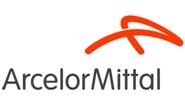Market Segment

February 12, 2017
ArcelorMittal NAFTA Segment Results Slip in Q4
Written by Sandy Williams
ArcelorMittal NAFTA segment results declined in fourth quarter 2016. Steel shipments decreased by 6.6 percent to 5 million tonnes from third quarter driven by an 8.5 percent decrease in flat volumes due to destocking in the United States.
NAFTA sales were down 11.1 percent from the prior quarter to $3.8 billion due to lower average steel price and shipment volumes.
The segment reported operating income of $164 million compared to $424 million in Q3 and was impacted by impairments of $507 million with respect to the intended sale of Long Carbon facilities in the US (ArcelorMittal LaPlace, Steelton and Vinton) ($0.2 billion), and following planned asset optimization at Indiana Harbor East and West in the US ($0.3 billion). In addition, operating performance was impacted by exceptional inventory related charges of $353 million in Q4 following the rapid decline of steel prices.
Highlights of projects underway in the NAFTA section include:
- Indiana Harbor footprint optimization underway: idling of redundant operations including the #1 aluminize line, 84” hot strip mill (HSM), and #5 continuous galvanizing line (CGL) and No.2 steel shop (expected to be idled in 2017). Further planned investments of ~$200 million including a new caster at No.3 steel shop (completed in 4Q 2016), restoration of the 80” HSM and Indiana Harbor finishing and logistics; expected completion in 2018
- Sale of long steel producing subsidiaries in the US (LaPlace and Vinton);
- Calvert: ramp up advancing with automotive qualifications proceeding and increased capacity utilization of 79 percent. A slab yard expansion ($40 million) is under way to expand HSM slab yard bays 4 & 5 to 5.3 mt/year of coils. Bay 4 was completed in Q1 increasing coil production to 4.6 mt/pa. Phase 2 slab yard expansion of Bay 5 will increase coil production from 4.6 mt/pa to 5.3 mt/pa. Completion expected in Q2 2017.
- Dofasco: Restart conversion of #4 galvanize line to dual pot line (capacity 160ktpy of galvalume and 128ktpy of galvanize products) and closure of #1 galvanize line (cap. 170ktpy of galvalume). This will increase shipments of galvanized sheet by 128ktpy, along with improved mix and optimized cost. Expected completion is Q2 2017.
During the earnings call Aditya Mittal, CFO and CEO ArcelorMittal Europe, was asked to comment on supply and demand. “So in terms of our core markets, let’s look at Europe and NAFTA, we have not really seen new supply come on stream. I’ve not seen any significant announcements of new blast furnaces being re-lit. I think in NAFTA the exception obviously is Big River and that will have an impact, but I think we can almost see that impact already in the marketplace. In Brazil, there has been one blast furnace re-light of a competitor of ours, but from what I understand that some of those tonnages will be absorbed by the growth in the Brazilian market and some of it will be exported.
Overcapacity in China continues to be a problem for the global market, said Mittal, even though they have cut 65 million tonnes of capacity in 2016. China needs to do more, he said, and a focus must be put on finding comprehensive trade solutions.
Said Mittal, “What does that mean? That means in the US, we need to enforce the trade actions that have been decided upon and in Europe, there are a few more critical trade cases, which should be decided upon this year and going forward on the medium-term basis both in the US and in Europe, we need a comprehensive solution, which means a better understanding of the subsidies and overcapacity in the Chinese steel industry and how that can be rectified and fixed in the medium-term. So you are also not concerned about the higher utilization you see across the board because even in Europe, we see right now that everybody is talking about volume increases out of the existing capacity.”
Aditya Mittal was asked to comment on competition from aluminum and the automotive industry. Mittal noted that two new products have been introduced by ArcelorMittal, Usibor 2000 and Ductibor 1000. “[Aluminum] did make progress with one or two vehicle platforms, but we are catching up and we are demonstrating that we can provide the automotive industry with new steel solutions which achieves their lightweighting targets. The other macro thing on this whole auto business and aluminum versus steel, I think is the fact that we may see in the US actually some of the standards relaxed, so the pressure to lightweight may also decline.”
An analyst brought up the subject of the proposed border tax, asking how much of ArcelorMittal’s Canadian produced steel might be affected.
Responded Aditya Mittal, “So quite a lot, more than 1 million tonnes, but I think it’s very premature to talk about this border tax. I think there’s not even an actual draft in front of Congress. Right now, it’s an idea and I think it will take about one to two years to get actually enacted. Fundamentally though, we are well positioned because we don’t supply to the US market from an import basis, right. We fundamentally produce steel in the US and that is what we are about as a company and so to the extent that we favor American producers, that’s good news for ArcelorMittal.”
Lakshmi Mittal, chairman and CEO said the oil and gas industry is showing signs of improvement in 2017 with some recovery in prices. He expects an improvement of about 4-5 percent in the sector. Automotive, machinery and construction is likely to grow by double digits in the range of 10-12 percent.







